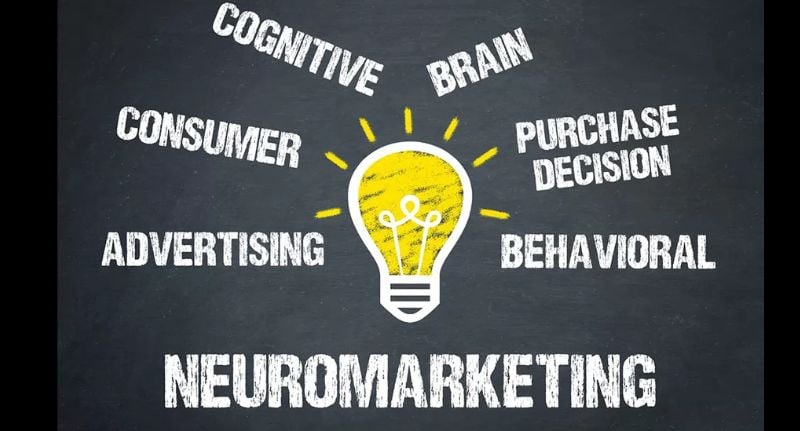Sarah Pelecanos wants to look inside your brain.
The TwentyTwo Digital founder won’t just be presenting at this year’s SXSW Sydney, she will also be challenging marketers to look beyond dashboards and click-through rates – and straight into the old noggin.
Her session, Brainwaves to Bottom Line, taps into a growing shift in the industry toward neuromarketing: the science of understanding how people’s brains actually respond to marketing, products, and experiences.
Looking inside the brain
As attention spans shrink and traditional research tools lose their edge, marketers are turning to neuroscience to decode behaviour in ways focus groups and surveys can’t.
Neuromarketing – which applies neuroimaging and cognitive science to marketing strategy – is moving from lab experiment to mainstream practice. While the technology is still developing, its potential to uncover what consumers truly think and feel is reshaping how campaigns are built.
“Historically in marketing we focus heavily on the emotional response to things, which is still completely valid,” Pelecanos told Mediaweek.
“Helping people connect emotionally is very important, and we can measure and gauge that based on how they respond. Neuromarketing, however, takes into account the more, and I say ‘somewhat’ intentionally here, objective side of things. It looks at how the brain actually processes information, helping to validate emotional responses while also creating a clearer understanding of how people think,” Pelecanos explained.
When you understand how the brain works, Pelecanos said, you can design experiences that make it easier for people to engage.
“You might choose specific colours or visuals for a website because you know the brain will process them in a way that’s easily digestible,” she said.
“It’s about combining the emotional and objective responses since human brains tend to function quite consistently in how they receive, process, and act on information.”
It’s almost like having the perfect legal cheat sheet. Almost.

The TwentyTwo Digital team Ashton Tuckerman, Sarah Pelecanos, Mikayla Nicol
From AI slop to emotional connection
With digital channels flooded by automation and repetitive AI-generated content, Pelecanos believes marketing has lost some of its human touch.
Neuromarketing, she argues, helps bring that connection back. “It considers how the brain reacts to what’s in front of it, whether it triggers stress, relaxation, engagement, excitement, or attention, and combines that with emotional insights to create the most effective marketing,” she said.
But adopting neuromarketing isn’t without its hurdles.
“Access to resources will probably be a big barrier,” Pelecanos said. “Not everyone can afford to bring in brain-tracking or eye-movement technology, and the subscriptions can be quite expensive. It really comes down to resourcing, but also what we’re taught in marketing.”
Pelecanos said that while the science can sound daunting, it’s not out of reach for most teams. “You don’t need the fancy tracking systems,” she said.
“They’re great to have, and I’d definitely recommend them, but they’re not essential for incorporating neuromarketing into your strategy. You just need to be aware of the different concepts and how they work.”
The sweet spot between attention and overload
Pelecanos’s session also explores how repetition and overexposure can backfire when the brain stops processing familiar information, a concept known as semantic satiation.
“When you were a kid, did you ever repeat a word so many times that it started to sound strange or lost its meaning entirely?” she said. “That’s semantic satiation, when repeated exposure causes something to lose its value or meaning. The brain simply tunes it out.”
In marketing terms, that means overused calls to action like ‘Buy now, buy now, buy now’ eventually lose impact. “Overexposure dulls engagement, and that’s exactly how the brain works,” she said.
Another concept, habituation, explains why consistency can also breed invisibility.
“A simple example is when you drive the same route every day and suddenly realise you don’t even remember the drive,” Pelecanos said.
“That’s habituation, your brain has decided that information isn’t important enough to retain. But if something unusual happens, like a clown on a unicycle, you’ll remember it because it breaks the pattern.”
The trick, she says, is balance. “In marketing, both semantic satiation and habituation can be areas of risk. Many brands overdo repetition, flooding audiences with the same message until they mentally tune it out. It’s not that people dislike the brand or message, it’s simply that their brains stop registering it after seeing it too many times.”

The role of AI in the mix
While neuromarketing is gaining attention alongside the broader AI boom, Pelecanos says it’s important not to conflate the two.
“This has been happening well before the AI boom,” she said. “Large corporations have been using this kind of technology and information for years, definitely since the broader technology boom, but not specifically in the AI era.”
“The AI side of it is more about interpretation,” she added.
“For example, if you were using tools like ChatGPT or Claude, you could input data and have it analysed for insights. I’m a strong believer that you need to know how to do these things yourself first, before relying on AI. And while I’m very pro-tech – I love AI – I also believe it needs to be used responsibly.”
From her perspective, AI can complement neuromarketing, but it’s no replacement for human understanding.
“People still need to know how to perform tasks unassisted and then use AI to improve productivity,” she said.
“From a neuromarketing perspective, I don’t think AI has had much influence yet, and probably won’t for another five years. There’s so much noise in marketing tech right now that we risk losing sight of the real goal: influencing a target audience for a particular brand.”
Rediscovering what makes people tick
Pelecanos believes neuromarketing’s growing appeal lies in its ability to reconnect marketers with the human side of their craft.
“To do this effectively, you need to understand how the brain works, how emotional responses are formed, and who those people are,” she said.
“Technology should support that understanding, not replace it.”
Her take is simple but pointed: the future of marketing isn’t just about leveraging AI or data, it’s about rediscovering what makes people tick. Or, as Pelecanos puts it, “the best campaigns don’t start with a brief, they start with a brainwave.”
